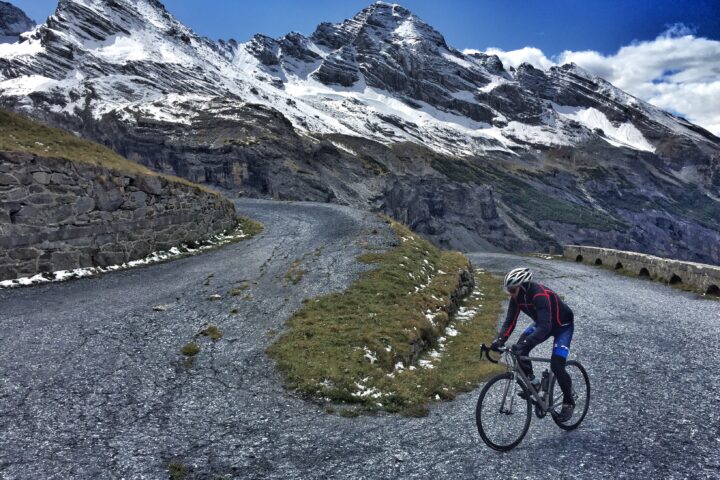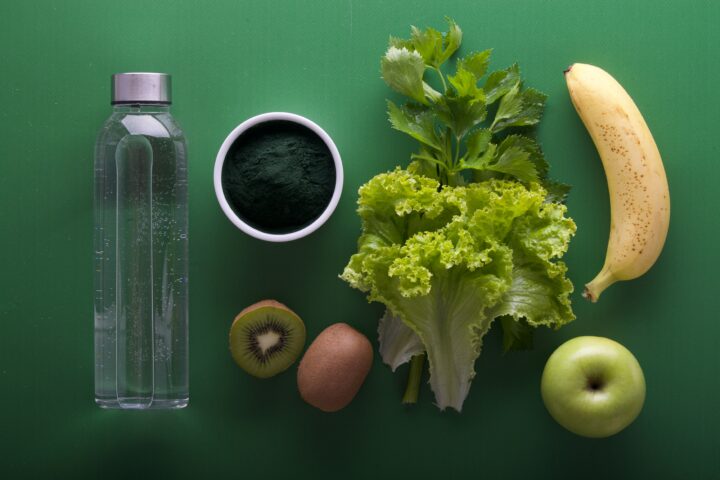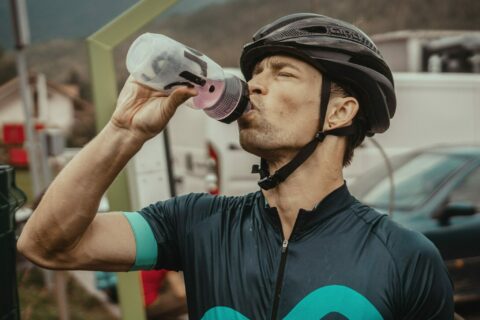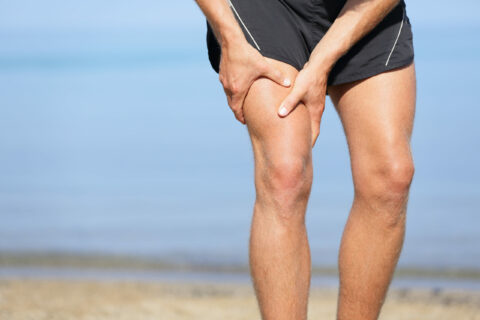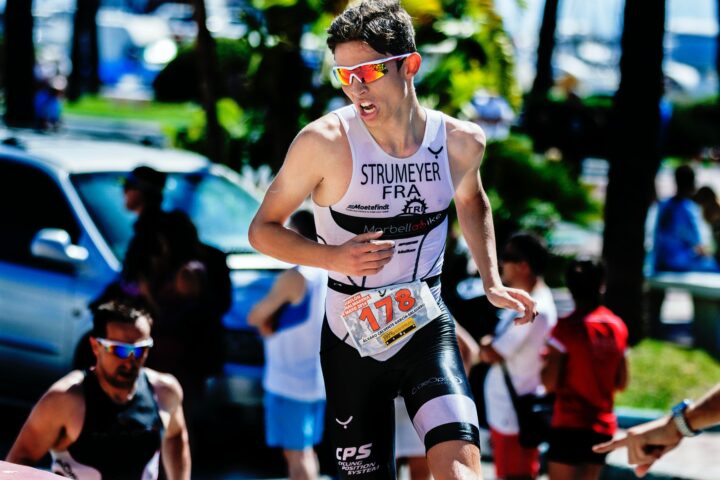Dr. Stephen Cheung explores whether you should drink according to a fixed schedule or if thirst is enough to dictate how much you drink.
Video Transcript
Intro 00:09
Welcome to Fast Talk Laboratories, your source for the science of endurance performance.
Dr. Stephen Cheung 00:19
Welcome to Fast Talk Labs, I’m Dr. Stephen Cheung, professor, and Senior Research Fellow in the Department of Kinesiology at Brock University in Canada. Cycling is a fairly unique sport in that we have water bottles and bottle cages on our bikes, such that we can carry fluids relatively easily with us. In contrast, if you’re a runner, the weight and biomechanical penalty for carrying fluids with you are a lot greater. So, you’re most often restricted to drinking at distinct water stations. So as cyclists, we have the luxury of asking the question, whether we should simply drink according to thirst, or whether we should drink according to a set schedule. Before talking about whether we should schedule our hydration or just allow thirst to dictate our drinking, the bigger overriding question we should explore is whether being mildly dehydrated actually impairs your physiology and performance. Current fluid replacement guidelines by the American College of Sports Medicine and other scientific societies recommend drinking enough during exercise to keep your body mass loss at less than 2%. So, for a 70-kilogram individual, that means drinking enough so that you are down by no more than 1.4 kilograms in weight at the end of your ride. The studies we will look at today push that to about the limits, down to sometimes up to 3% body mass loss. As with most questions in sports science, we will see that findings from different studies often conflict and contradict each other. However, we will try to take the best lessons we can from them.
Dehydration and Cyclist Performance
Dr. Stephen Cheung 02:07
The first study we will look at comes from the Australian Institute of Sport, done by Tammy Ebert in 2007. Her study had quite an interesting rationale for cyclists, focusing on the whole idea of power to weight ratio as an important determinant of performance. In this lab-based study, Ebert asked the question of whether being slightly dehydrated may actually be an ergogenic aid during the late stages of a cycling event, especially if that race or stage finishes on a climb. In the two trials, the trained cyclists rode for two hours steady in the heat, either replacing all of their sweat loss and carbohydrate-electrolyte fluid or else drinking only minimally and dropping their body mass to 2.5% below starting body mass. At the end of the two hours, it was no surprise that maintaining hydration, reduced heart rate and also core temperature compared to when the cyclists were dehydrated over the course of the two hours. The trials then concluded with a ride to exhaustion at 88% of maximal aerobic power up a simulated 8% grade. When you hydrated tolerance time was at 19.5 minutes. However, when dehydrated by 2.5% body mass tolerance time was only 13.9 minutes. This study, therefore, concluded that the potential gains from a lower-body mass in the power to weight equation is more than negated by the decreasing ability to sustain power. So, overall, this study would suggest that dehydration does indeed impair performance in cyclists.
Blinded Dehydration
Dr. Stephen Cheung 04:00
Let’s now take a look at a 2015 study from my lab. This study was unique because it was the first time that anyone tested the effect of blinded hydration. In all previous studies such as the Ebert one, participants knew whether they were getting fluid, or they were not, this knowledge can affect their psychology and set up a subconscious template for their performance. We wanted the blind participants to remove the psychology from the equation, and we did it by having an IV in the cyclist’s arms while they were exercising. Over the course of 90 minutes of cycling in the heat, we either fully replaced fluid loss with a saline infusion, or else we performed a sham infusion where only minimal sailing was provided. We also repeated these conditions with the participants either able to rinse their mouth to get rid of the sensation of thirst, or else they felt thirsty because they were not allowed to rinse their mouths. So, we ended up with four different conditions, including for the very first time conditions where participants were normally hydrated but felt very thirsty because they couldn’t rinse their mouth for the EU-t trial. Another condition, DH-NT, where participants were dehydrated by up to 3% of their body mass, but where they did not feel thirsty because they were able to rinse their mouth throughout. At the end of these 90 minutes, the trained cyclists then rode a 20-kilometer time trial in the heat.
Dr. Stephen Cheung 05:44
So let’s first take a look at physiology. Not surprisingly, both heart rate and core temperature were higher in the dehydrated conditions compared to the U-hydrated ones during the 20-kilometer time trials. Being thirsty or not had no impact on physiology. The important thing I want to point out, however, is that neither the higher heart rate nor rectal temperature was catastrophic in preventing the cyclist from completing the time trials. So, within this range of about two hours of steady, hard exercise and a hot environment, physiology was worse than dehydrated, but not necessarily catastrophic.
Dr. Stephen Cheung 06:28
Now, let’s look at the main measure of interest for most cyclists, which is the actual performance outcome and the power output. What we found was that, regardless of hydration status or thirst sensation, there was ultimately no difference across any of the conditions in 20-kilometer time trial performance. This was true for completion time, power output, and also for pacing over the 20-kilometers. We also had a questionnaire for the participants, and they were not able to distinguish between the real and the sham infusing conditions. So, from this study, again, with the first of its kind blinded hydration protocol, we concluded that dehydration of up to two to 3% of body mass, and also thirst to this level of dehydration did not have a significant impact on the cycling performance of up to about two hours in the heat.
Hydration and Racing in the Heat
Dr. Stephen Cheung 07:29
As you may imagine, I did a lot of media interviews when this study came out, both because of the unique experimental approach, and also because of the potential message that you don’t really need to drink during exercise in the heat. I was quite clear in these interviews, that I was not necessarily advocating that individuals do not drink, even if given the opportunity. The main thing I wanted to get across was that you can still perform well even when slightly dehydrated, and therefore to not use the inability to drink as a mental crutch and set yourself up subconsciously for a bad performance. This study set up a wave of studies from other labs also exploring blinded hydration. Some of the studies supported my findings of no effect from mild dehydration, while other studies still found an impairment with mild dehydration. So, the science is still somewhat equivocal about the absolute necessity for fluid replacement, up to about 3% body mass loss.
Drinking According to Thirst vs. Drinking According to a Set Schedule
Dr. Stephen Cheung 08:39
So, we will move on now from the question of whether fluid replacement is absolutely necessary to the question of whether we should drink to thirst or whether we should drink to a program schedule. Proponents for drinking to thirst often point to the evolutionary perspective that we have evolved over many 1000s of years to be finely tuned to our hydration needs. Meanwhile, proponents for drinking to schedule often argue that thirst by itself is not sufficiently sensitive for the purposes of exercise performance, especially in the heat. To address this question. Let’s take a look at a 2019 meta-analysis, performed by Eric Gulay in Canada. He found seven studies published since 2000, directly comparing drinking to thirst or ad libitum fluid replacement versus scheduled program drinking. These studies involved other cycling or running protocols at moderate the high-intensity exercise between one to two hours. The environmental conditions ranged from relatively close to room temperature, up to hot environments with the body mass loss at about 2% with the drink to thirst conditions.
Dr. Stephen Cheung 10:00
In the table, you see some of the main fluid replacement results summarized across studies. We can see that programs scheduled drinking involved about 1.7 liters of fluid consumed, resulting in about 73% of sweat loss replacement, and a body mass decrease of about 1%. In contrast, less than half as much fluid was consumed during ad-lib drinking trials, resulting in only 37% sweat loss replacement, and a body mass decrease of 2.1%, slightly more than the recommended ACSM limit of 2%. Interestingly, despite the differences in fluid replacement, only a trivial performance effect was observed between programmed and ad-lib drinking, that if anything, favored ad-lib drinking. Breaking down the analysis further, no differences were seen in running or cycling studies when looked at separately. There was also no influence based on the experimental temperature, the exercise duration, or the exercise intensity. This meta-analysis, therefore, concluded that at a range of about .9 to 3.1% body mass loss, there was no practical performance effect between drinking to thirst versus programmed drinking.
Taking Care of Your Hydration
Dr. Stephen Cheung 11:33
So, how do we make sense of all this information? I think the big message from all of these studies comes back to taking care of your hydration, but at the same time not being obsessed about it. Again, there are blinded studies that contradict my 2015 paper, but being slightly dehydrated, even up to the threshold of 2% body mass as recommended by many sports bodies, often isn’t the end of the world or a showstopper to performance. Your physiology might be a bit more stressed, but your performance may not actually be impaired. To the degree to which this is true may depend on factors that affect your sweating rate, including age, fitness, heat adaptation status, and your level of habitual comfort with thirst.
Dr. Stephen Cheung 12:25
So, I personally feel that drinking the thirst and slight dehydration is appropriate and fine for a lot of our day-to-day rides and even races. But there is absolutely a time and place for scheduled program drinking. This is the photo of Canadian race walker, Evan Dunfee at the 2019 World Championships in Qatar, where he won a bronze in the 50- kilometer event. At about four hours of intense exercise in extreme heat, it’s doubtful that drinking the thirst would have been an appropriate strategy, let alone an optimal one. His support team had a supremely planned heat management strategy, including prior heat acclimatization, pre-cooling, and race cooling and hydration. The course design meant that Evan could access cold water, cold sponges, and caps from a freezer every one kilometer, and he drank an incredible amount of fluids at every station as a result.
Dr. Stephen Cheung 13:29
So, if your event is hot and or long, I would go with a more regimented drinking schedule, and not just rely on thirst, because now you’re going to be really struggling to keep within that 2-3% body mass loss range, and both physiology and performance is likely to be heavily impacted. Program drinking is also really useful and important with multi-day events, or even over days of hard training. That’s because the more dehydrated you get over the course of a day, the more recovery you’re going to need to get back up to par the next day. It’s not just a simple matter of a number on a scale, as being dehydrated can affect things like glycogen restoration, inflammatory response, and also sleep quality. Over multiple days of effort, you need to approach each day with one eye and how it’s going to impact the next day. So, maintaining hydration today is also about setting you up for a strong tomorrow.
Dr. Stephen Cheung 14:34
Here are the references to the studies that I’ve discussed in this workshop. There’s a lot that we’ve covered here, as hydration research is a massive field with a lot of intricacies. For example, we haven’t touched at all on carbohydrate or electrolyte concentrations for different temperatures or exercise types, but we’ll come back to that in other workshops.
Dr. Stephen Cheung 14:57
What’s been your experiences with preparing for racing or training in the heat? Do you largely just drink to thirst? Or do you always schedule and program your fluid replacement? Join our conversation in the forums feature of Fast Talk Labs. I’m Dr. Stephen Cheung, and we’ll be preparing more content on how heat affects us and how we can manage it. Thanks for watching. See you next time

